
The vessel "Vityaz" in Kaliningrad, the full name of the Research vessel "Vityaz" (NIS "Vityaz") is a legendary vessel in the history of oceanology, which has made an outstanding contribution to the study of the World Ocean.
The ship, originally named "Mars", was built in 1939 at the Bremerhaven shipyard as a cargo and passenger vessel for transporting fruit from southern countries to Germany.
During the Second World War, Mars transported cellulose from Scandinavia, and then became a 600-bed military hospital. After the end of the war, after reparations, the ship ended up in the UK with the new name "Forward, Empire", where it was located for less than a year. After it was transferred to the USSR and stood in Leningrad.
1946 - 1949: the vessel was renamed "Vityaz"; became a Soviet research vessel; the vessel made 65 scientific voyages under the flag of the USSR Academy of Sciences. The maximum depth in the Mariana Trench (11,022 m) was measured from its side and a new type of animals - pogonophores - was discovered. This legendary figure - 11,022, can be seen on board the ship at the present time.
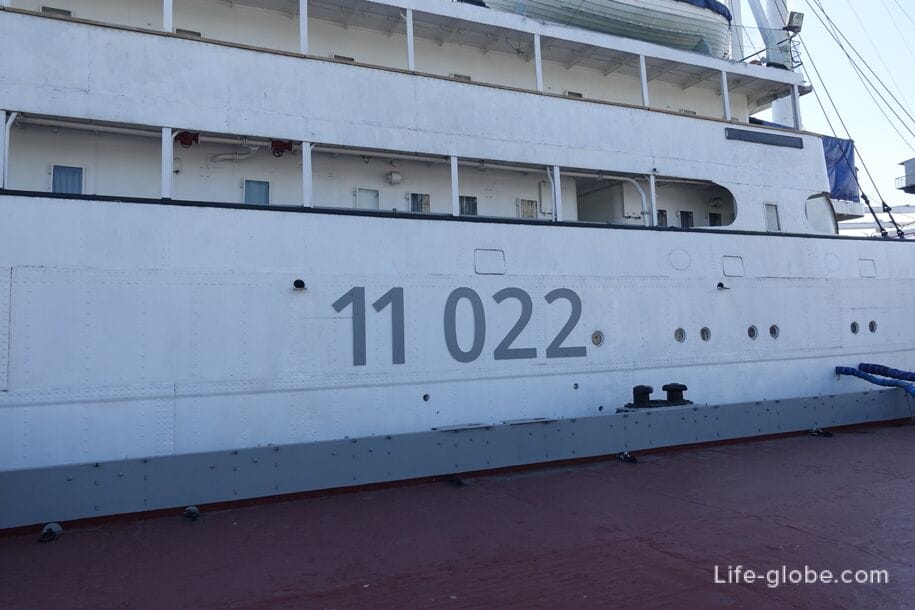
On April 22, 1979, having completed its last, 65th scientific voyage, the Vityaz entered the waters of Pregoli. The solemn transfer of the ship to the city did not happen, and the ship itself anchored for many years.
In 1992, the Russian Academy of Sciences transferred the Vityaz to the Museum of the World Ocean, and in 1994, after the completion of repair work, the Vityaz moored at the museum pier in the center of Kaliningrad. It was with the Vityaz that the museum of the World Ocean began, and today this vessel is still the main exhibit of the museum and the central object of the embankment of the Historical Fleet of Kaliningrad.
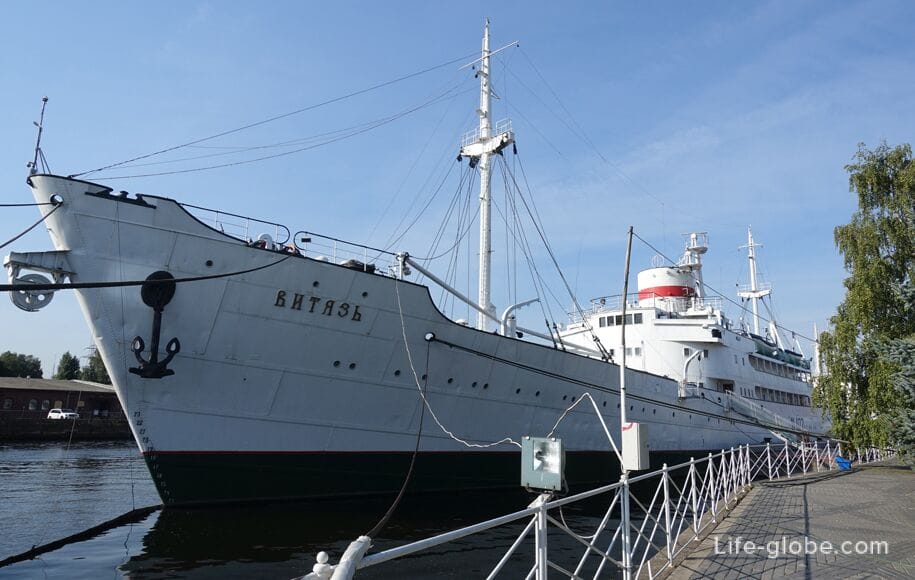
Anyone can visit the vessel-museum "Vityaz", both independently and with an excursion. On board the ship, you can walk along the decks, see the expositions presented in the halls of the ship, look into the cabins and feel the life of people on sea expeditions, and if you want, even live in the "walls of the Vityaz" - guest cabins "Vityaz" function on the ship.
Bow decoration of the corvette Vityaz, 1885. Sculptor P.K. Klodt. Copy 1:3, plaster. Author Z.G. Abashvilli St. Petersburg, 1996.

Main staircase and hall. The painting "Three Heroes" is an association with the history of three "Knights".
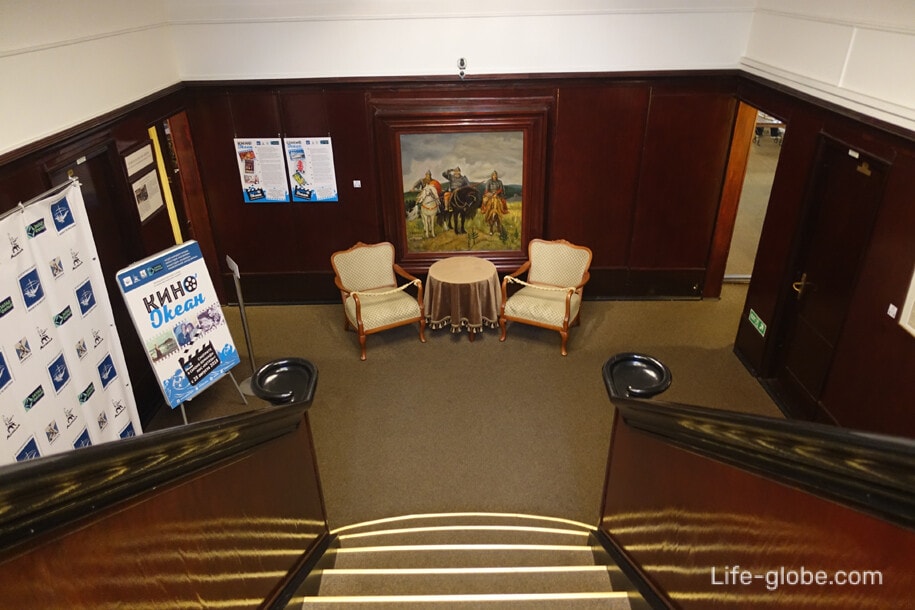
The exhibition project "KinoOcean", telling about the legendary films in which the sea helped to create vivid films and images.

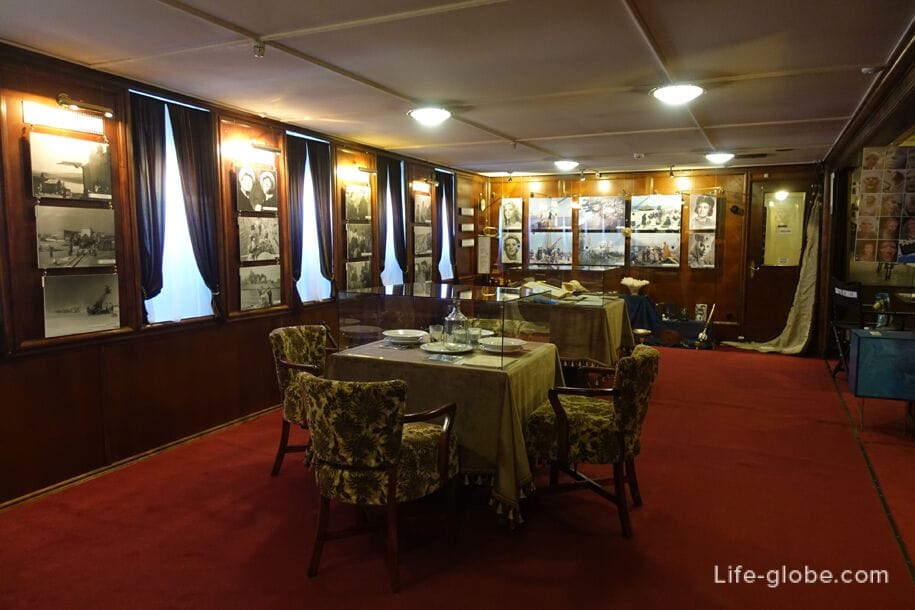
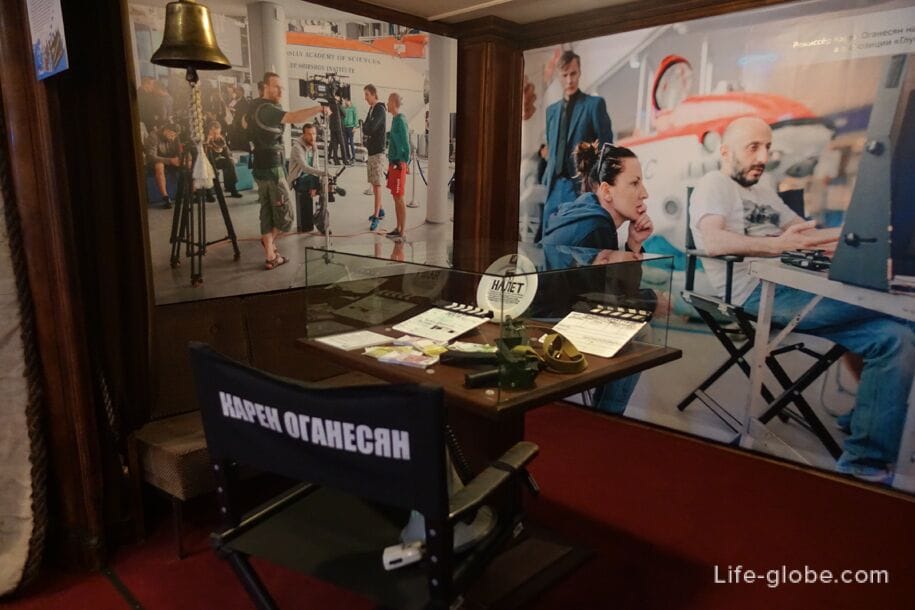
Women's marine suit
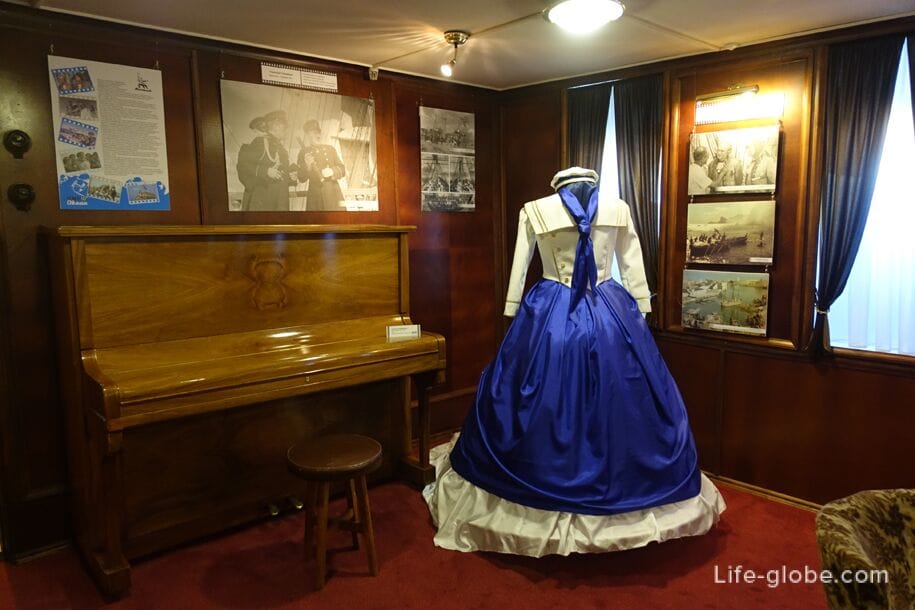
The exposition "Great discoveries". The exposition, along with others, presents ritual objects from the islands of Southeast Asia, spices, minerals, etc. Once spices were of extraordinary value, and were very expensive.
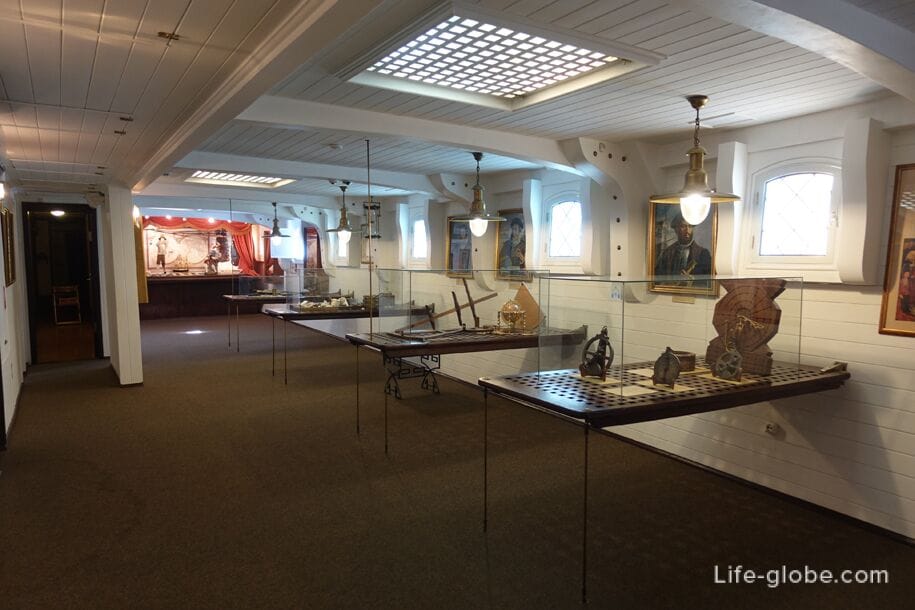
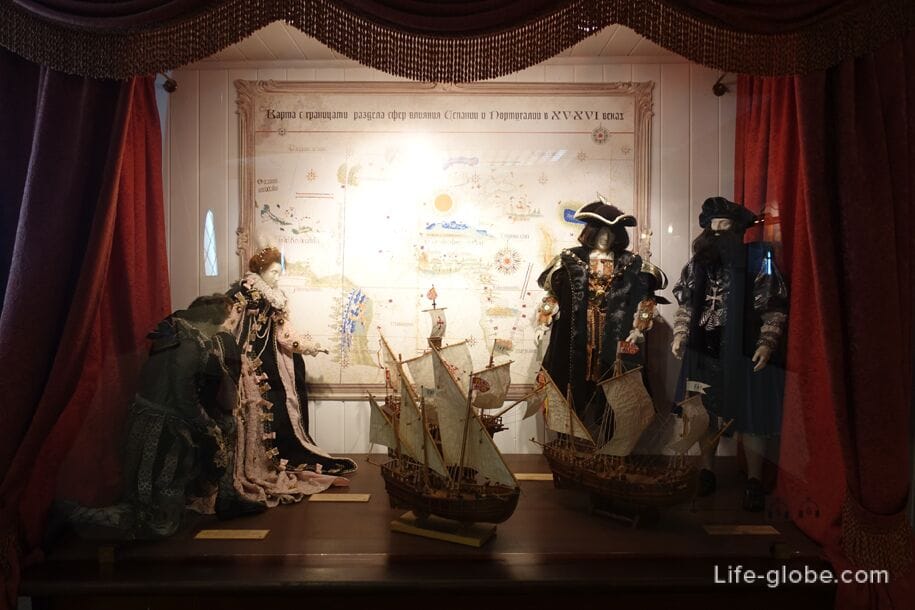
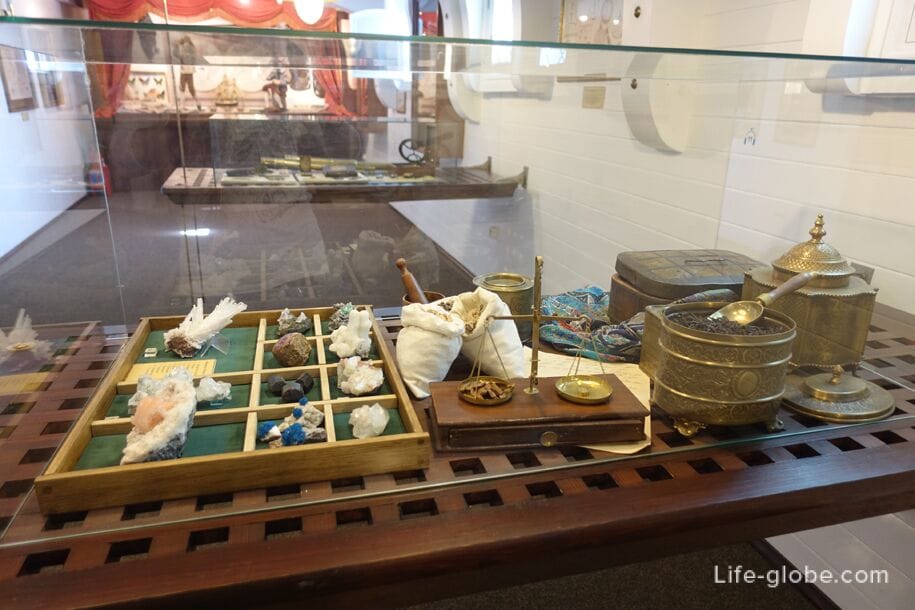

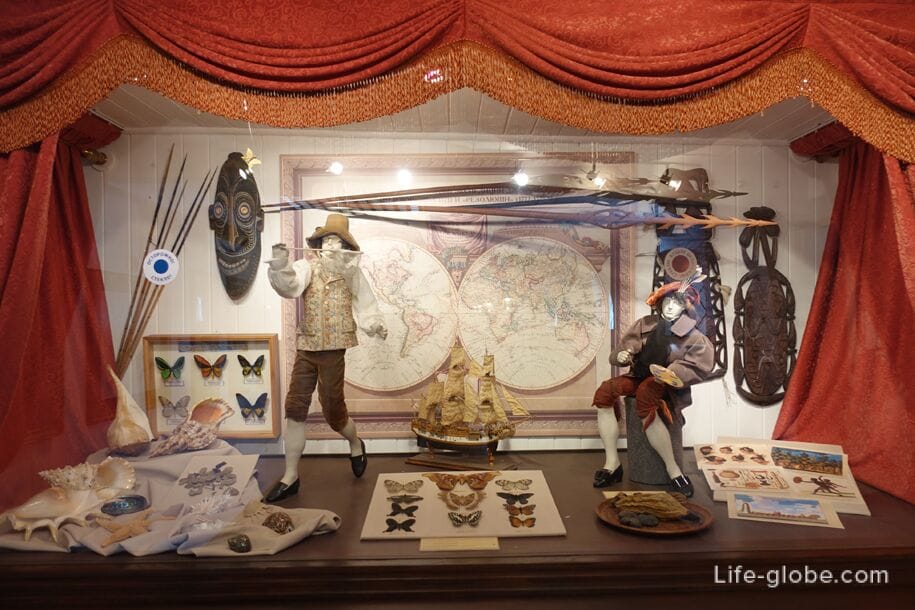
The gyrocompass room is one of the most important rooms on the ship. A gyrocompass is a device that indicates the course of a ship in the open ocean. All the devices presented on the bulkheads of the room help to orient the axis of rotation to the north pole.
There was a watchman at the post in the gyrocompass room, who recorded all the data about the operation of the device in the log.
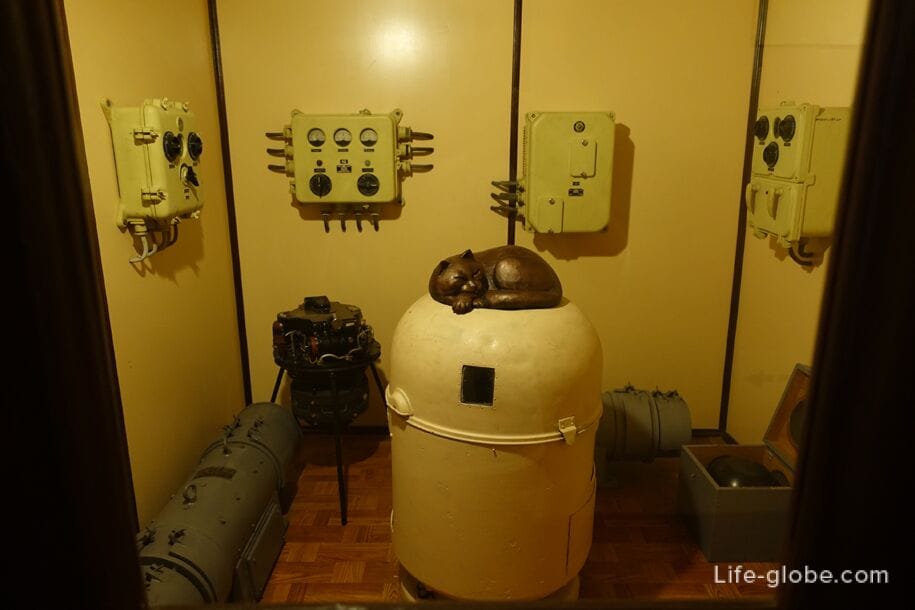
The pantry. The room, which was connected to the galley with the help of a special lift, through which ready meals were delivered to the pantry.
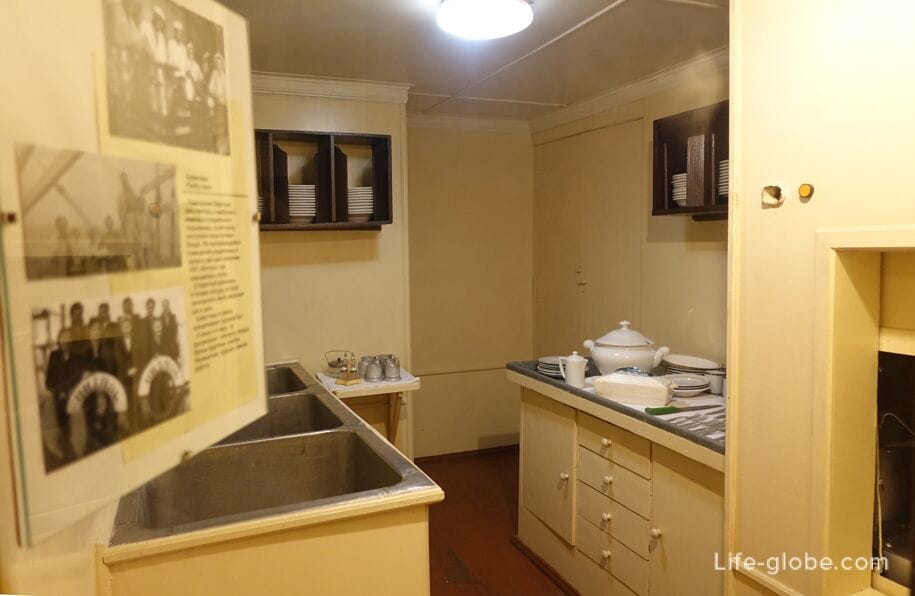
Scientific Officer's cabin
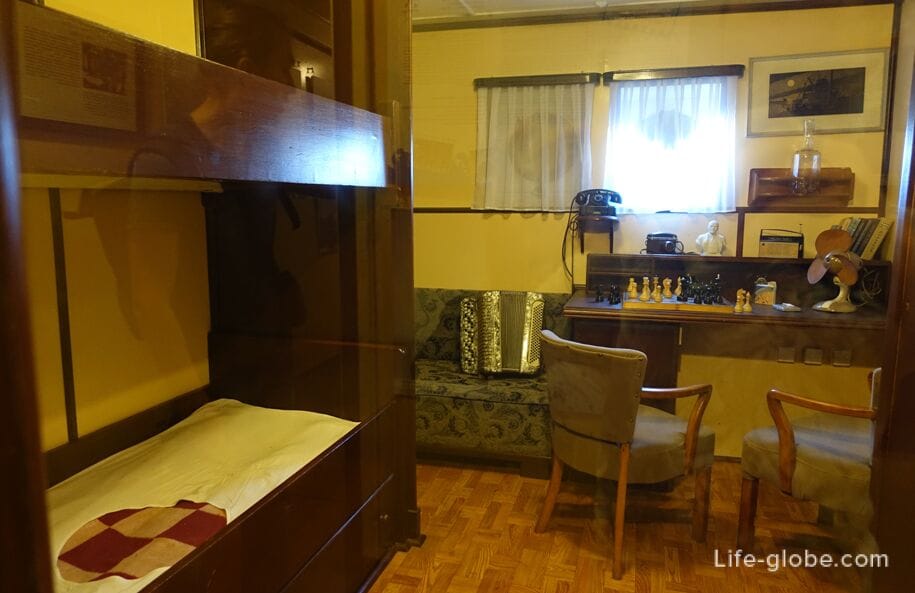
Medical unit. A ship's medic is a special profession. He should be a generalist doctor, able to solve problems in isolation, without consulting colleagues and accurate laboratory tests. Prevention and treatment of diseases that have arisen with a sharp change in the lifestyle of a person going to sea requires not only high professionalism, but also intuition, which gives reason to consider the profession of a doctor a special gift.


Lamppost. One of the most important conditions for the safety of navigation is an impeccable knowledge of the rules for preventing collisions of ships at sea, as well as the means available to seafarers to avoid collisions with other vessels.
These rules, among other things, establish the procedure for carrying ship lights in general and special cases. Vessels are obliged to wear the lights they are supposed to in various situations from sunset to sunrise, in all weather, observing all the rules. The main characteristics of the lights are the location on the ship, the color and the lighting sector (the sector of the horizon illuminated by fire).
They differ: the lights of ships standing at sea, the lights of ships on the move, the lights of ships towing and towed, the lights of ships laying telegraph cable, the lights of pilot ships, the lights of trawling ships, the lights of ships stranded.
The museum exposition presents ship lanterns of various types and purposes. Some of the lanterns belong to the property of NIS "Vityaz".
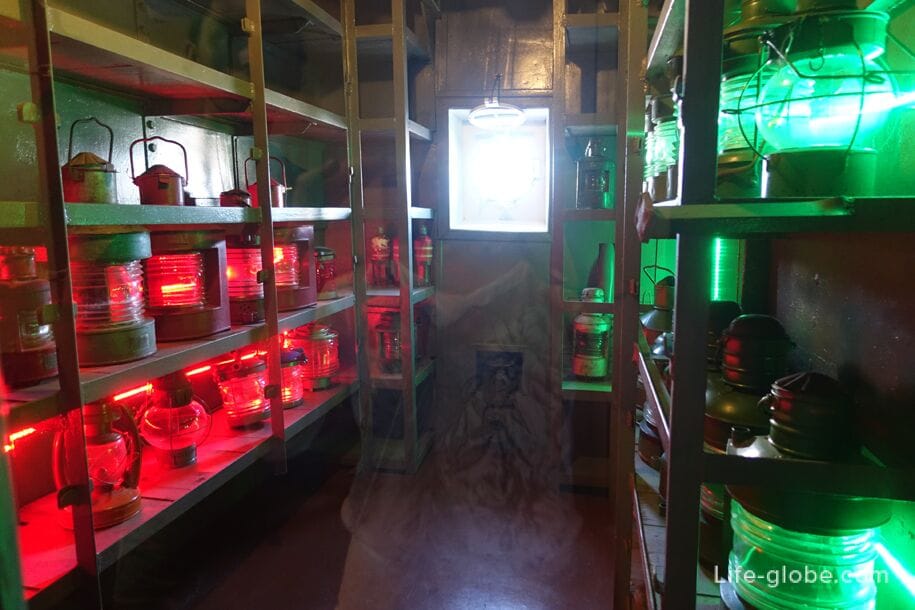
In one of the rooms, you can see the internal state of the Vityaz, in which the vessel was in July 1994, as a result of which you can assess the full scale of the work carried out to restore the museum vessel.

Stairs leading to the upper deck. The upper deck is the deck of the memorial cabins and laboratories of NIS Vityaz.

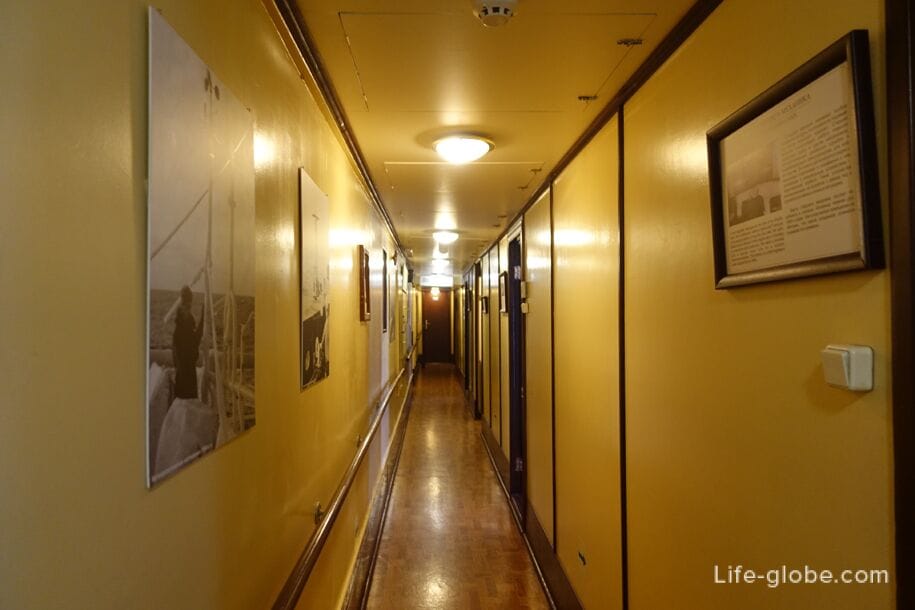
Hydrological laboratory, where one of the most important discoveries in oceanology of the 20th century was made - the discovery of counterflow in the Indian Ocean, later named in honor of scientist B.A. Tareev.
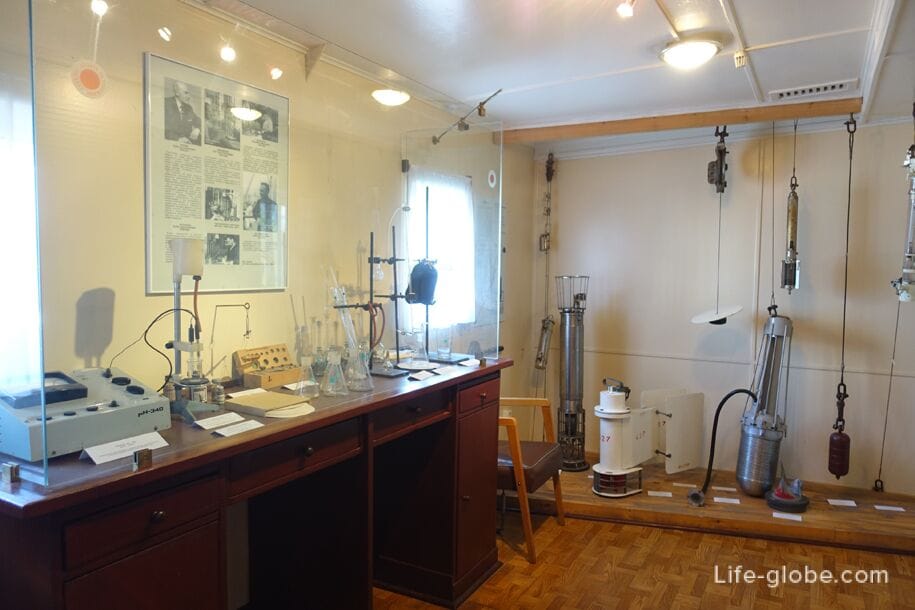
The cabin of the chief engineer. The senior mechanic occupies a special position on the ship, it is not by chance that by tradition he is often called "grandfather". The chief mechanic controls the operation of the ship's main engine and other mechanisms that ensure the movement of the ship and generate electricity for all its systems.
The chief engineer's cabin is located next to the engine room and is connected to it by a telephone and a special device - an intercom handset.
The chief engineer's cabin consists of an office and a bedroom. The interior is typical of the 1960s.
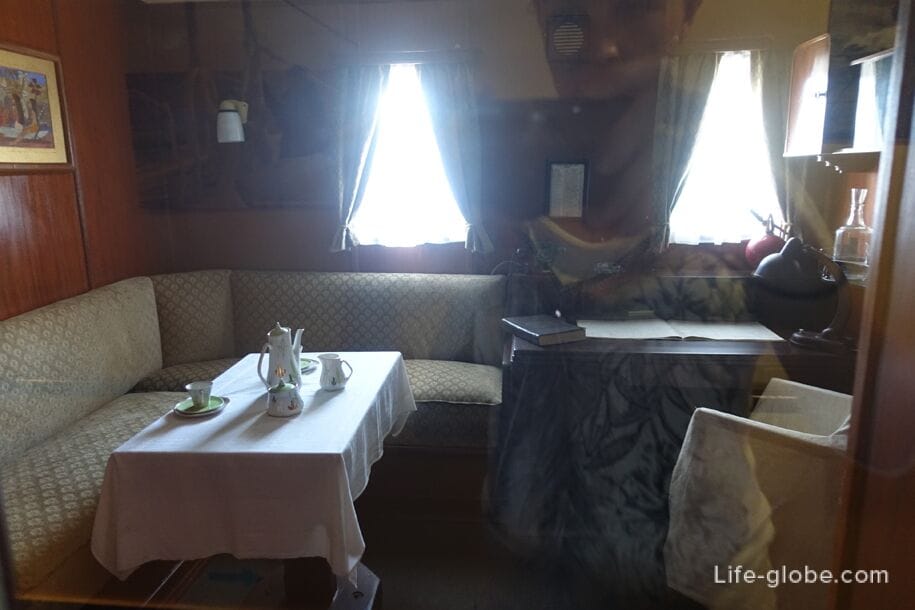
The exhibition "The Phenomenon of El Nino". El Nino is a change in the temperature of the surface layer of water in the equatorial Pacific Ocean, which occurs every three or seven years. This phenomenon usually originates in December, on the eve of Catholic Christmas, which is why Peruvian sailors called it El Nino, which means "baby boy".
El Nino is associated with the climate of our entire planet.
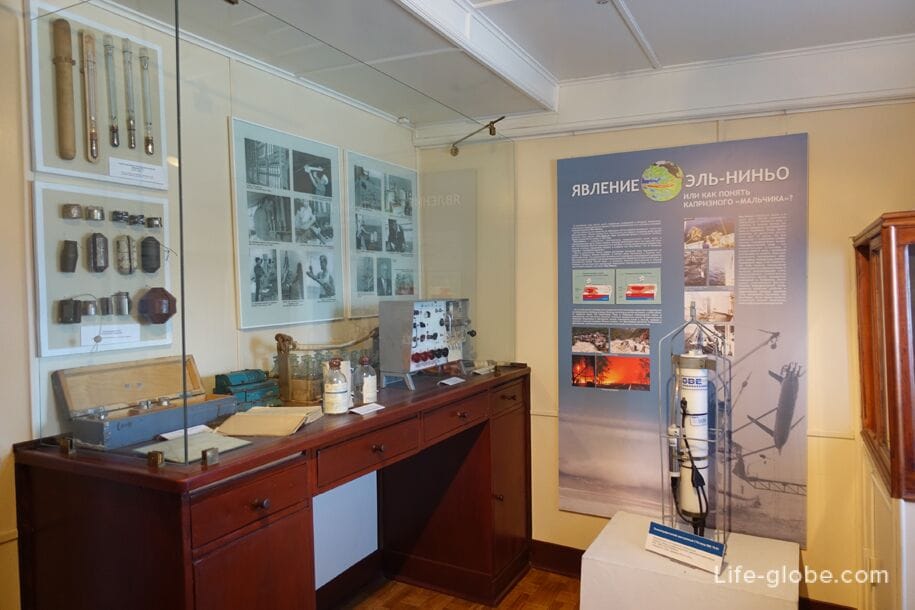
Coral collection from the museum's collections
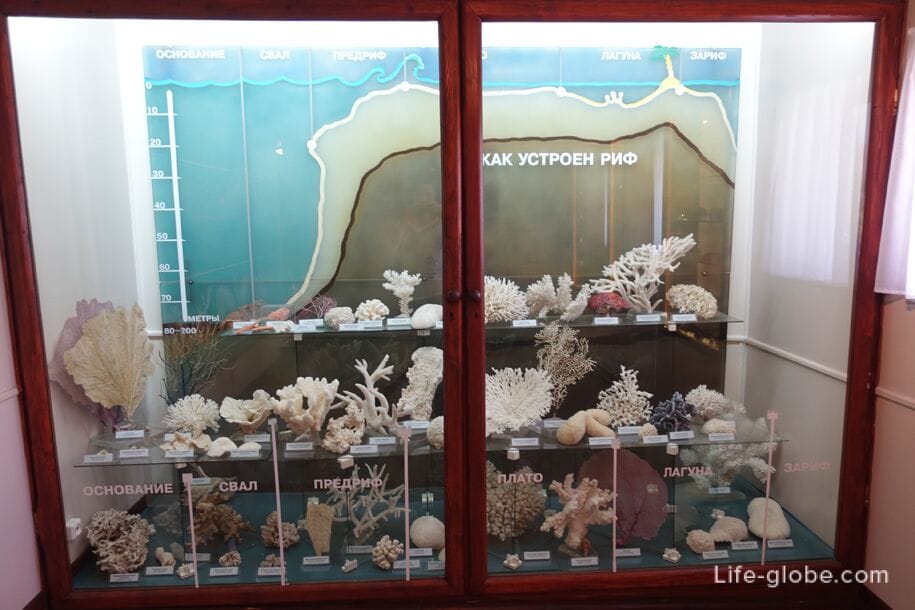
Plankton Laboratory



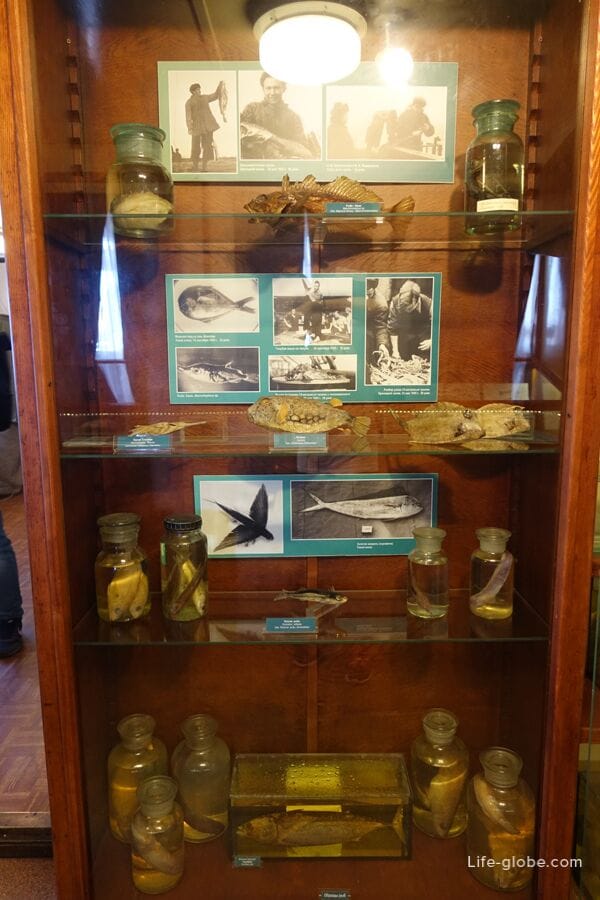
In the laboratory, among other specimens, the head of a female black-bellied anglerfish is presented. A small male attaches to the female's body and lives on the female's body, parasitizing all her life.

The galley. The profession of a ship's chef is very laborious. The health and general mood of the team depends on it. In the conditions of the ship, an exceptional skill is required to delight people with delicious dishes every day and, when necessary, to maintain the traditions of the festive table.
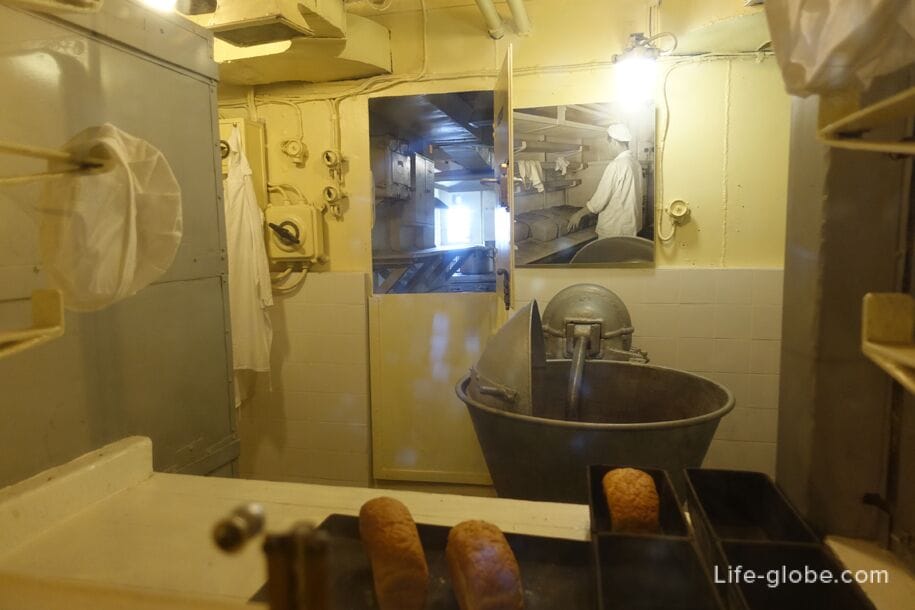

Geological Laboratory
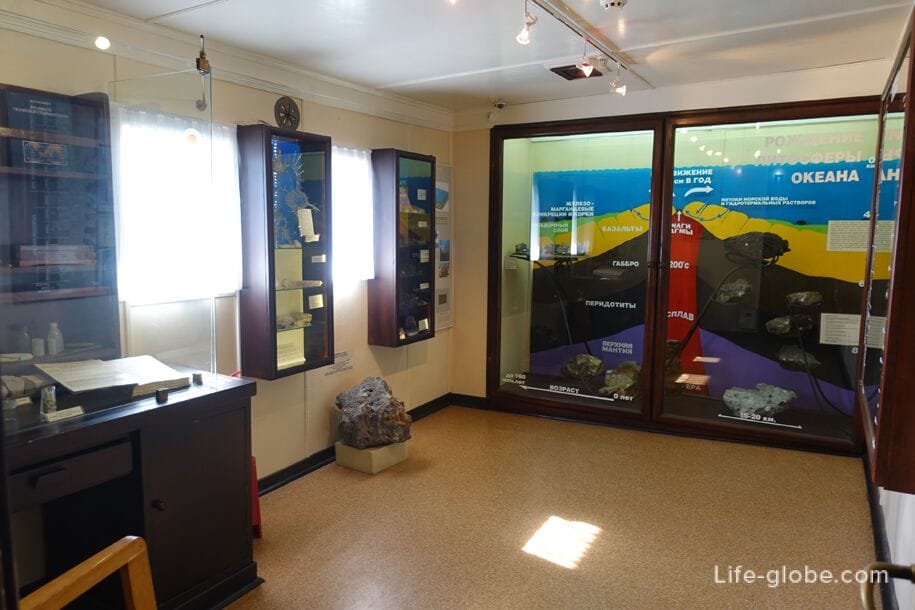
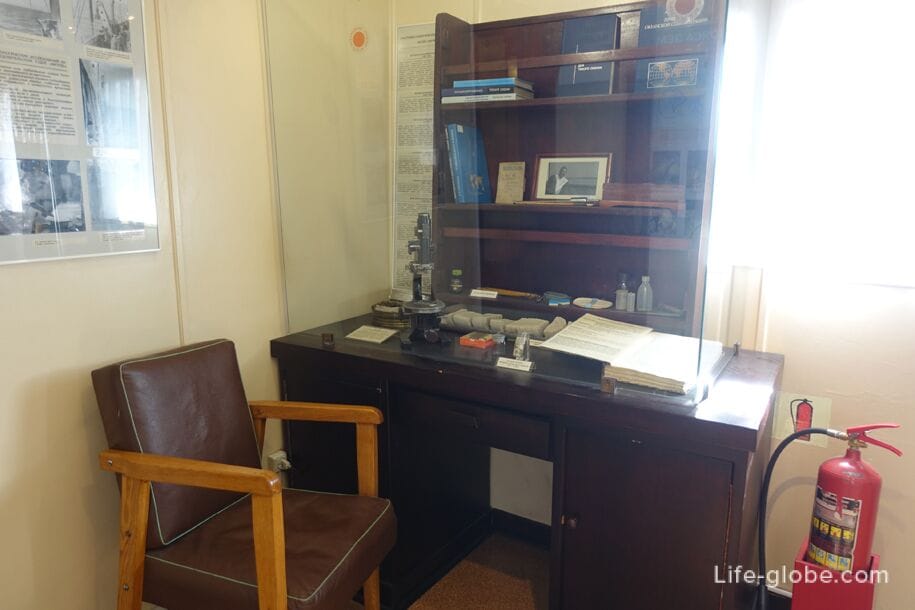
The engine room is the heart of the ship. Here are the mechanisms that ensure the movement of the ship and generate electricity for the functioning of all its systems: the main and auxiliary engines, a seven-cylinder diesel engine, a propeller shaft, three diesel generators.
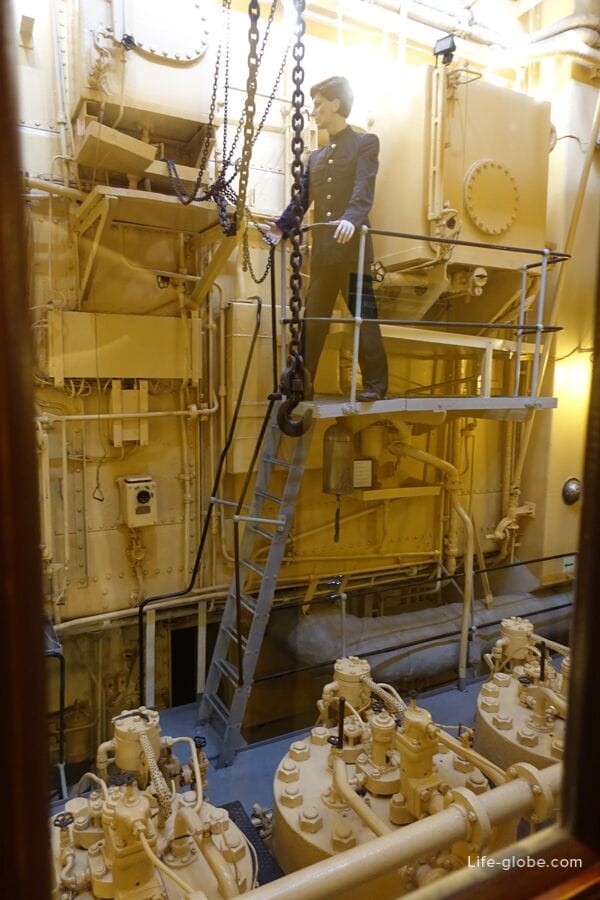
Senior Navigator's cabin

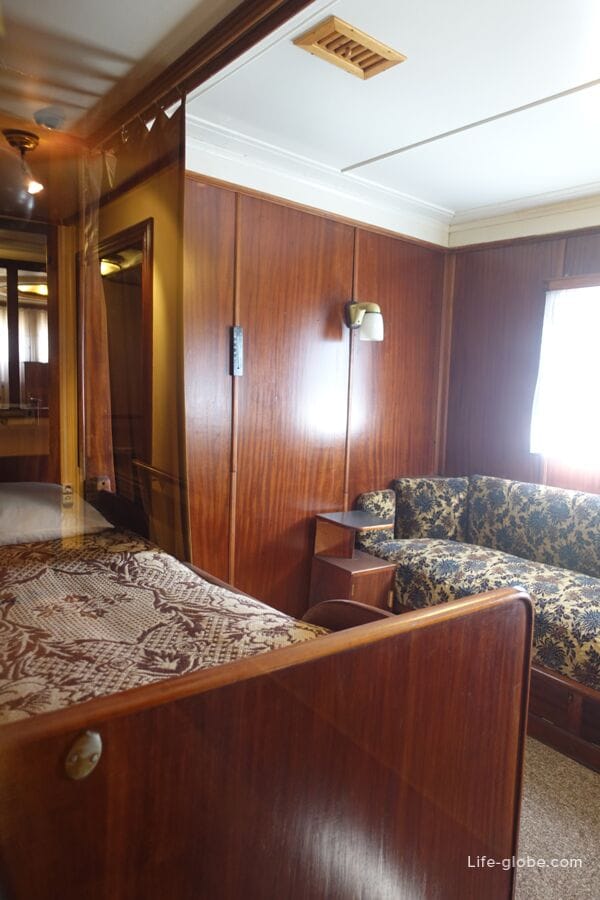
The cabin company. On the voyage, the cabin was primarily a dining room and a rest room, and on the parking lot was the front living room of the NIS Vityaz, through which tens of thousands of visitors to the ship passed.
The mess hall also served as a venue for international scientific conferences and meetings with representatives of the press. Musical groups performed here and literary evenings were held, birthdays and ship holidays were celebrated.
Tables were set four times a day in the mess for senior members of the scientific staff and crew. There were trays of bread on the sideboard by the mirror, and each table was covered with a white tablecloth. If the sea was stormy, special sides were raised at the tables, and tablecloths were soaked with water so that plates and cutlery would not slip.
The traditional seats of the captain and the head of the expedition were at a round table, which was located in the center of the room. The piano was fixed on special struts that held it during pitching.

The jaws exhibition, which presents a collection of jaws and teeth of different species of sharks of the World Ocean - from tiny to large representatives. The collection was collected by the Candidate of Biological Sciences, senior researcher of AtlantNIRO F.F. Litvinov.

Exhibitions "Routes of sea expeditions":
- "Russia opens the ocean, 19th century"


a 19th-century naturalist's cabin. Scientists who went on sea expeditions in the 18th and first half of the 19th centuries were called naturalists. This term denoted a specialist of a broad profile in the field of natural history. The field of view of scientists included the collection of a wide variety of information on all sections of natural science (plants and animals, the design of herbariums, the manufacture of effigies, various sketches, etc.);
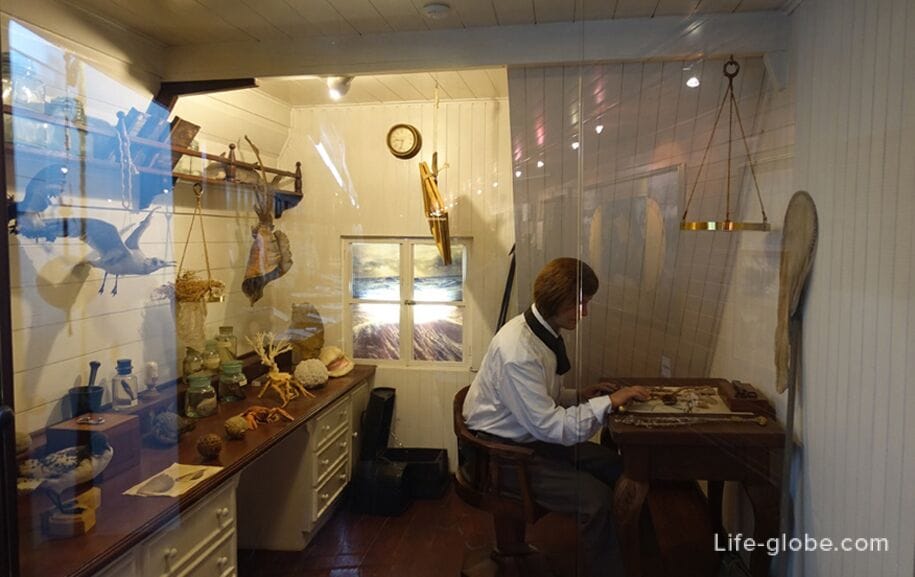
- "The Poles of the Earth";
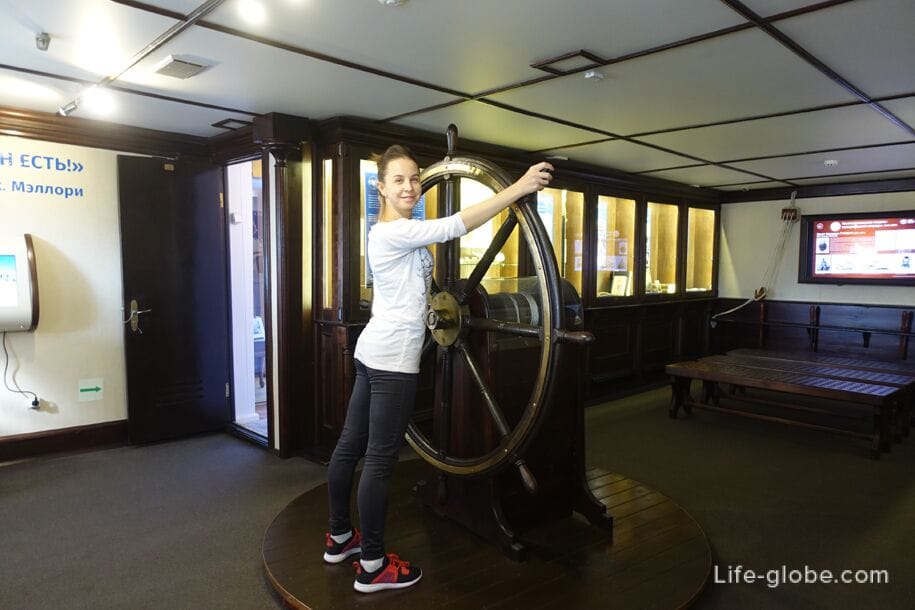
- "Russian polar expeditions of the 20th century"


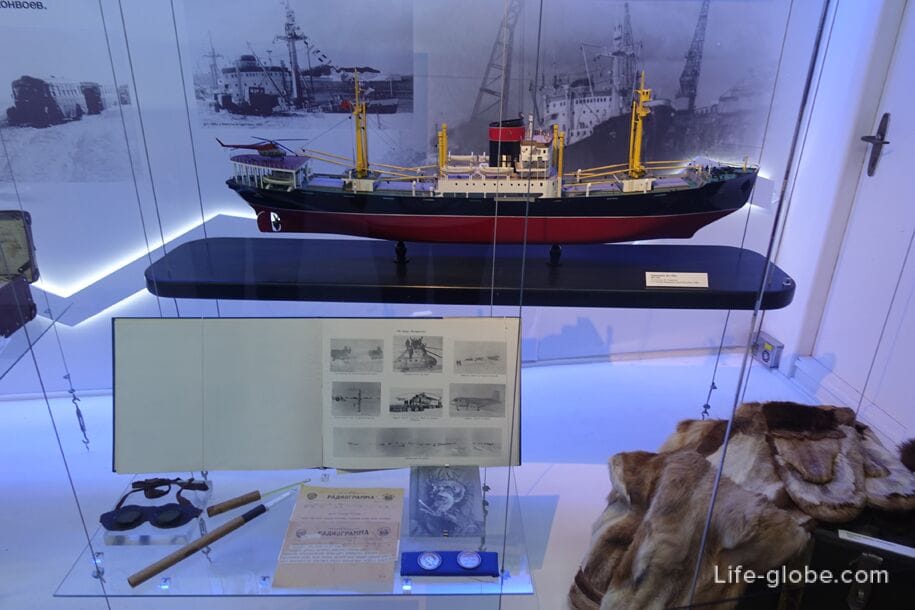
the interior of the house of the polar station in the 1930s.
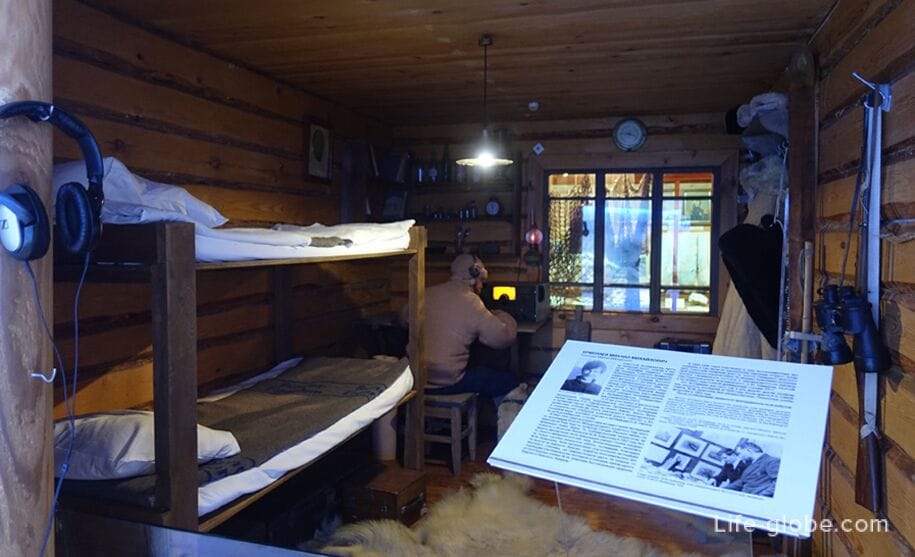
Ship's bells. The ship's bell serves to give signals in the fog when anchored and to "beat the bells". The expression "flask" means a half-hour period of time on the ships of the fleet, and the number of flasks indicates the time.
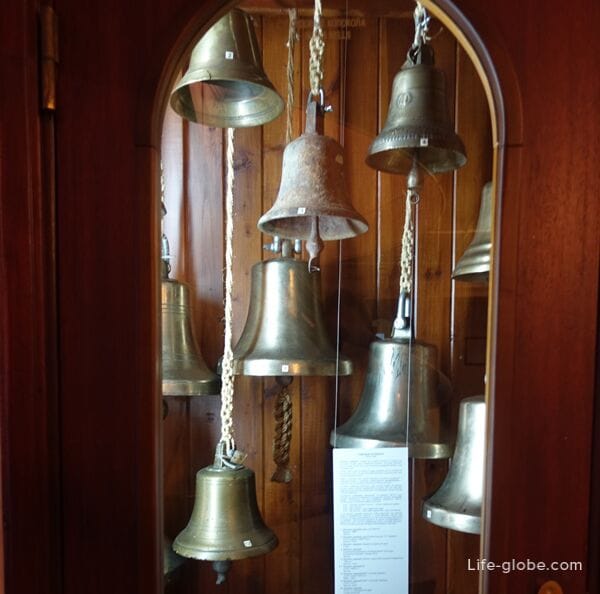
The office of S.O. Makarov. The round - the - world expedition of 1886-1889 .

Exposition "Around the world on the "Vityaz"

A fragment of the cabin of the enlisted personnel, 19th century. Midshipmen spent months or even years in such conditions. There were almost 100 of them on the ship, up to 12 in one room.
In the Diaries of S.O. Makarov there are records about cabins "... steps 7 in length and 5 in width", where bunks are arranged in three rows, tea is drunk on a single table, letters are written, and read.

The exposition dedicated to the swimming of N.N. Miklukho-Maklay (1871-1872).
On the first "Knight" in 1871, the scientist Miklukho-Maklay (1846-1888) went to the shores of New Guinea. On the shore of the Astrolabe Bay, where his corvette took him, Maklay lived for a total of three years, conducting various kinds of anthropological studies, meteorological and hydrological measurements and collecting various natural science and ethnographic collections.
In the exposition of the museum vessel, you can see a model of the corvette "Vityaz" and a full-length sculpture of Maklay, the work of Lviv sculptor S.M. Bratin.


This memorable inscription on the porthole was left by the grandson of N.N. Miklukho-Maklay - Paul Maklay-Robertson. The inscription was made with a diamond on the ring of Miklukho's grandson-Maklay.

Exposition dedicated to the 100th anniversary of the birth of Alexey Dmitrievich Dobrovolsky. Dobrovolsky was one of the largest ocean scientists, a general specialist in marine science and an organizer of the study of the World Ocean. He took an active part in the transfer of NIS Vityaz and the creation of the Museum of the World Ocean.
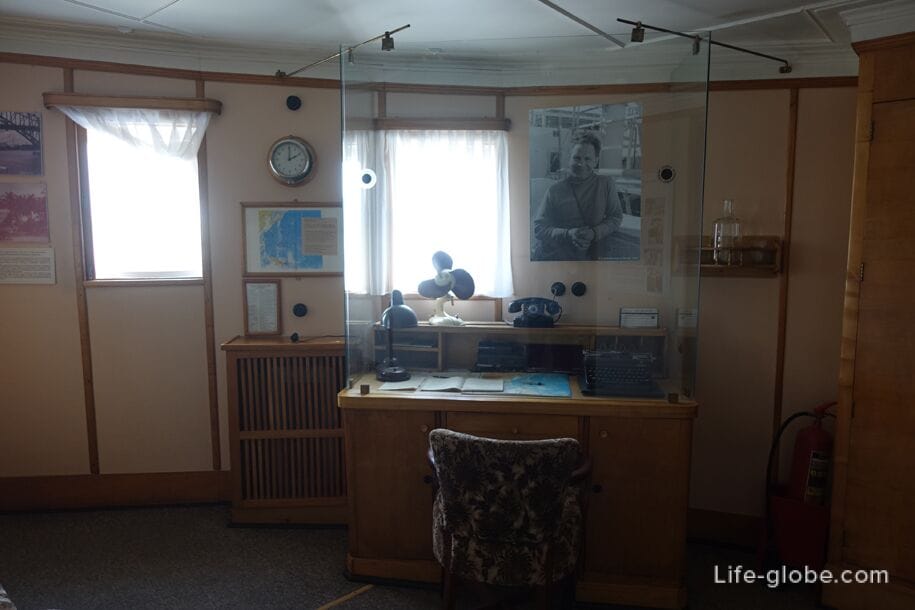
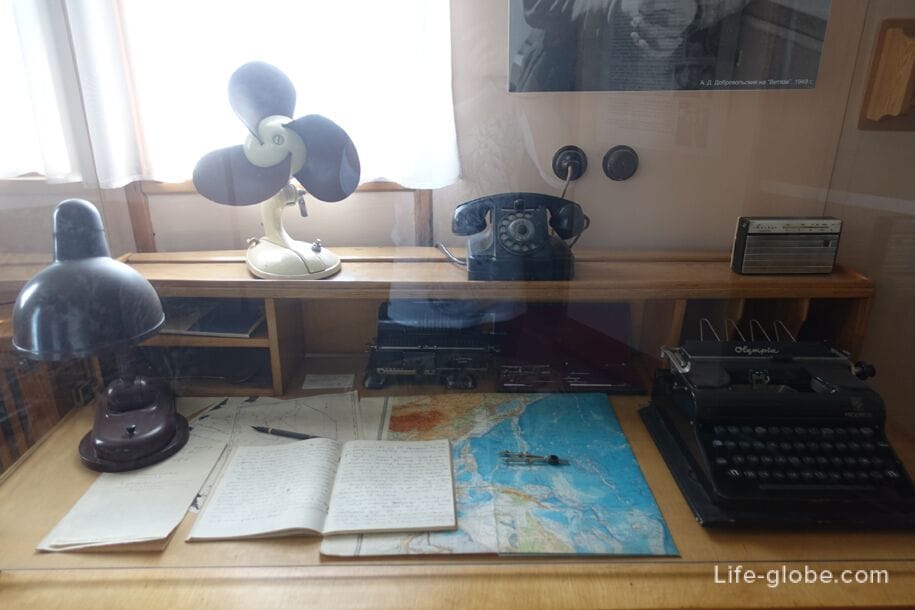
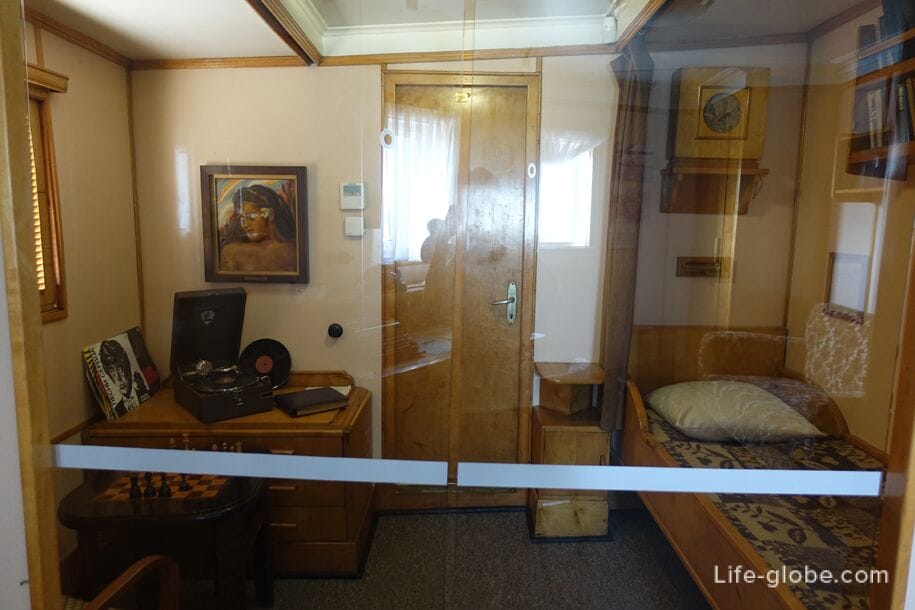
Captain's cabin. The captain on the ship is responsible for the lives of people and the overall safety of the ship. He is responsible for all the events that take place on board. The captain's cabin is located next to the wheelhouse, and this is not accidental, it is the captain who is obliged to directly control and monitor the course of the vessel.
The captain's cabin is one of the most comfortable on the ship, it has a separate bedroom and a toilet room. It is customary to arrange receptions for guests in the cabin's office, so there is a buffet with dishes and a table.


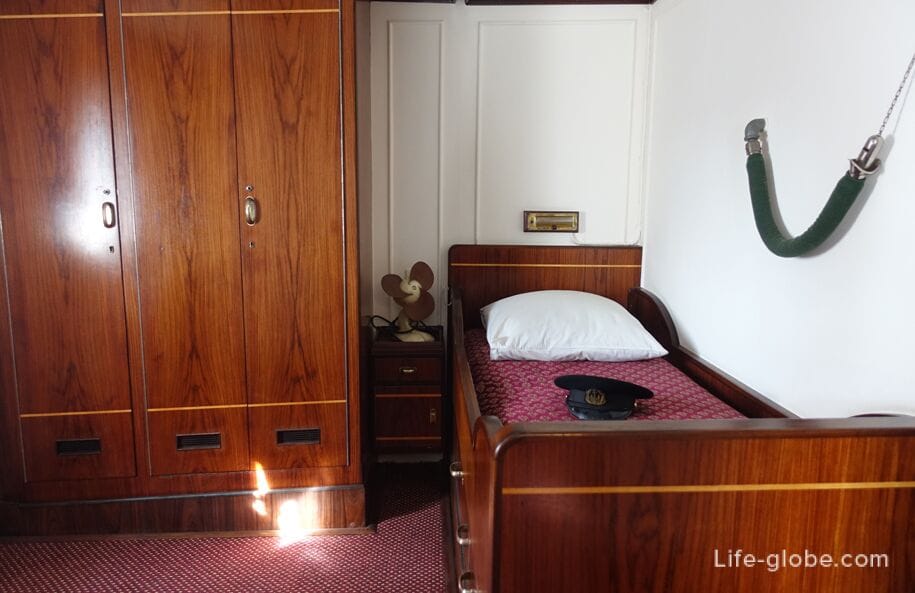
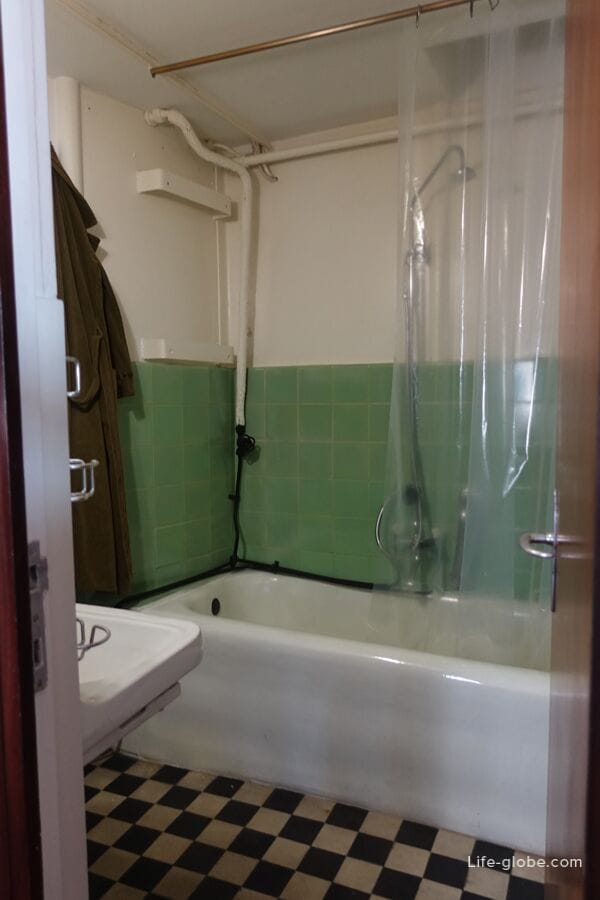
The steering wheel of the ship's NIS "Vityaz". Metal, wood. Germany, 1939. The steering wheel was installed at the emergency control post during the construction of the vessel.
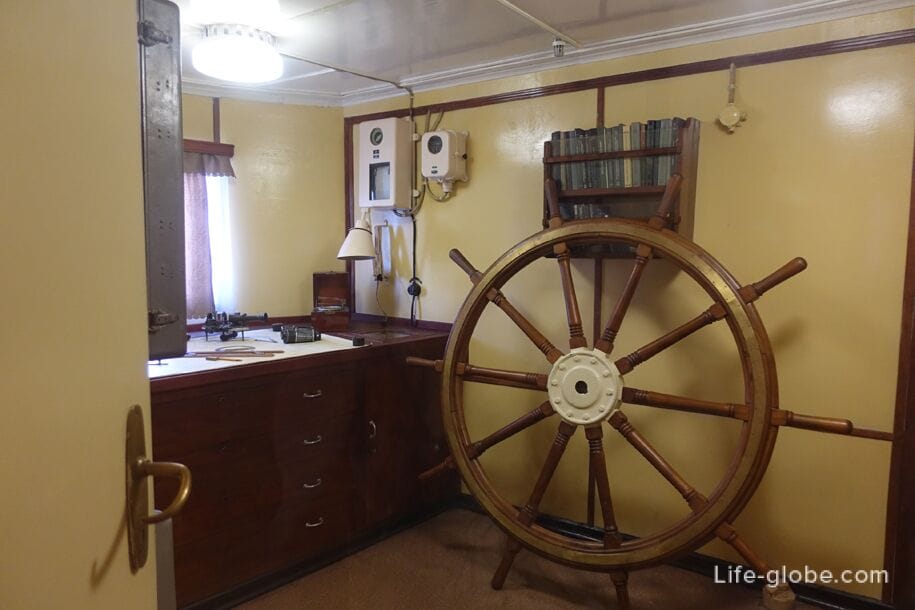
Navigation cabin. In this cabin, the navigators of the Vityaz plotted the ship's course for several weeks ahead, according to the voyage assignment. Subsequently, this course was adjusted during the work. It also stored instruments, navigation charts, ship logs, reference books, lots and various manuals for safe navigation.

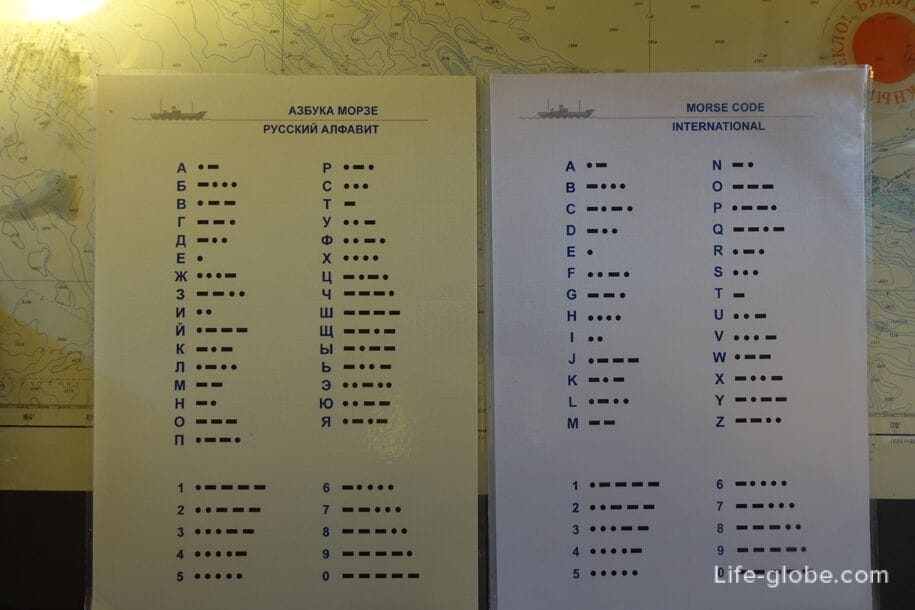
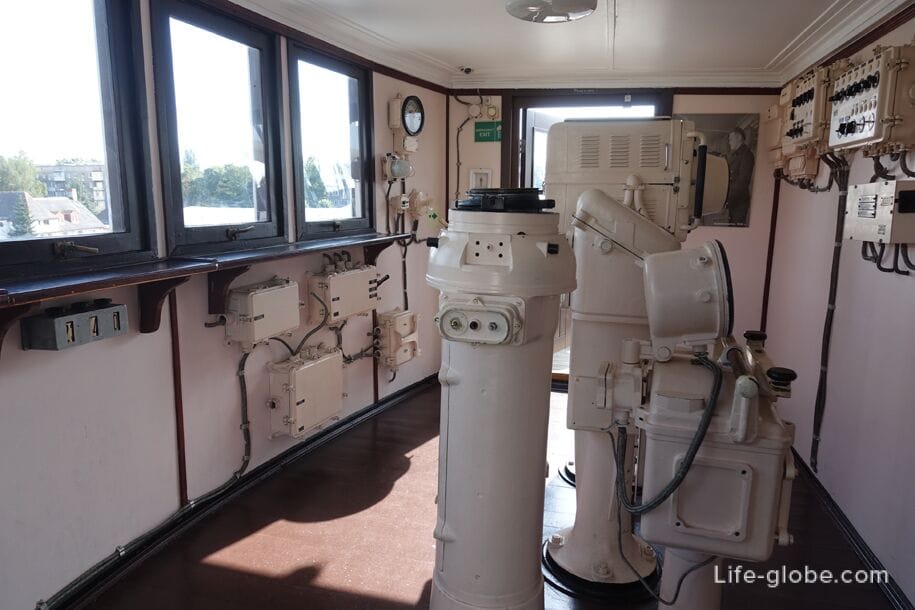
The exposition "Discoveries from the ocean depths"


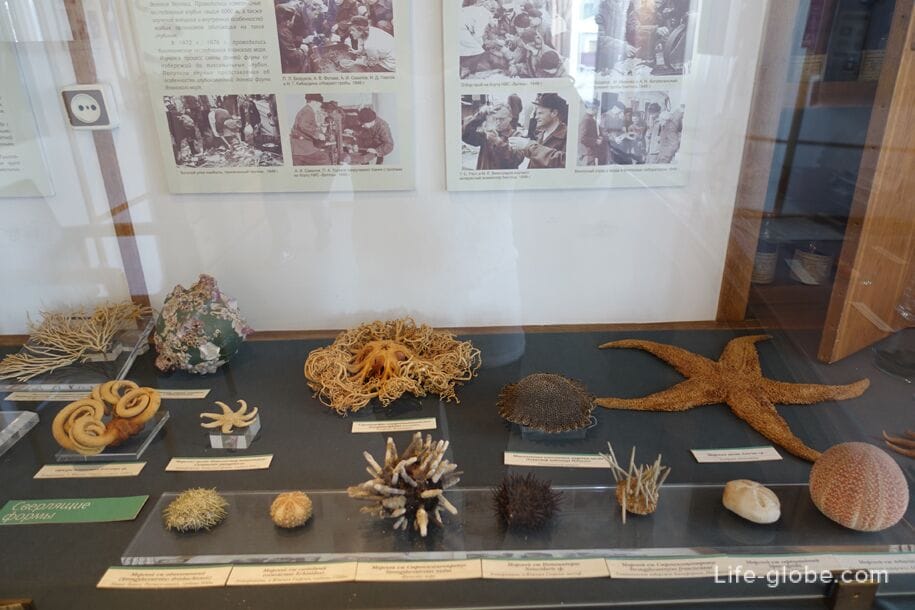
On the open deck of the NIS "Vityaz"
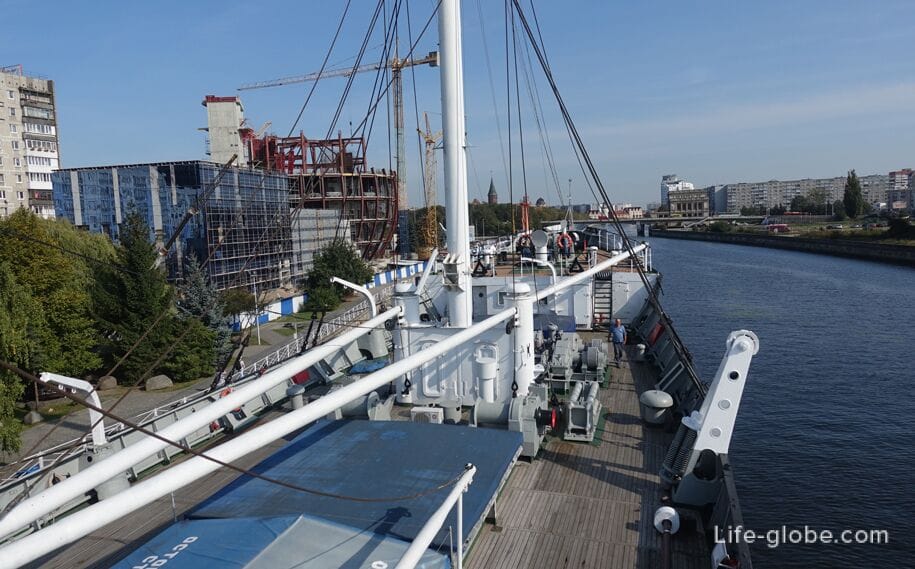
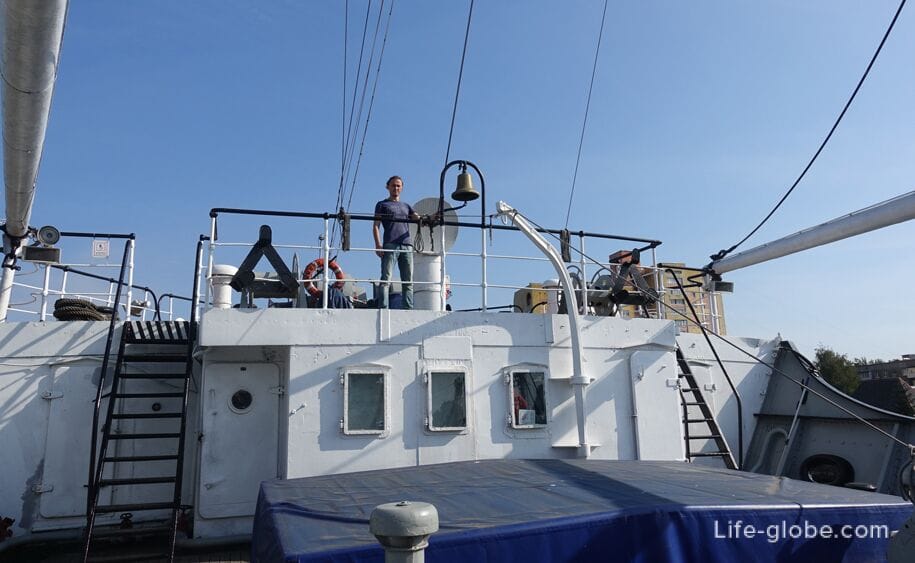

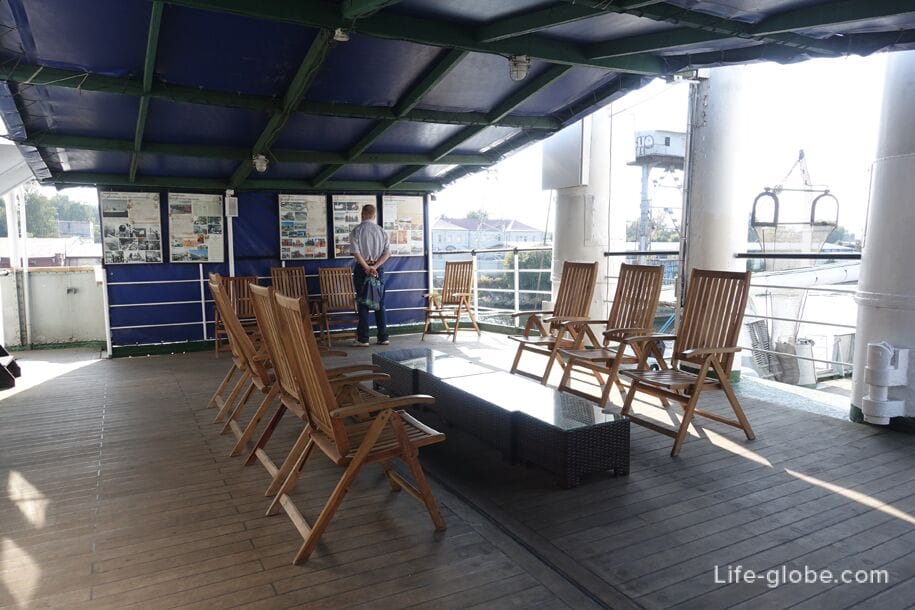
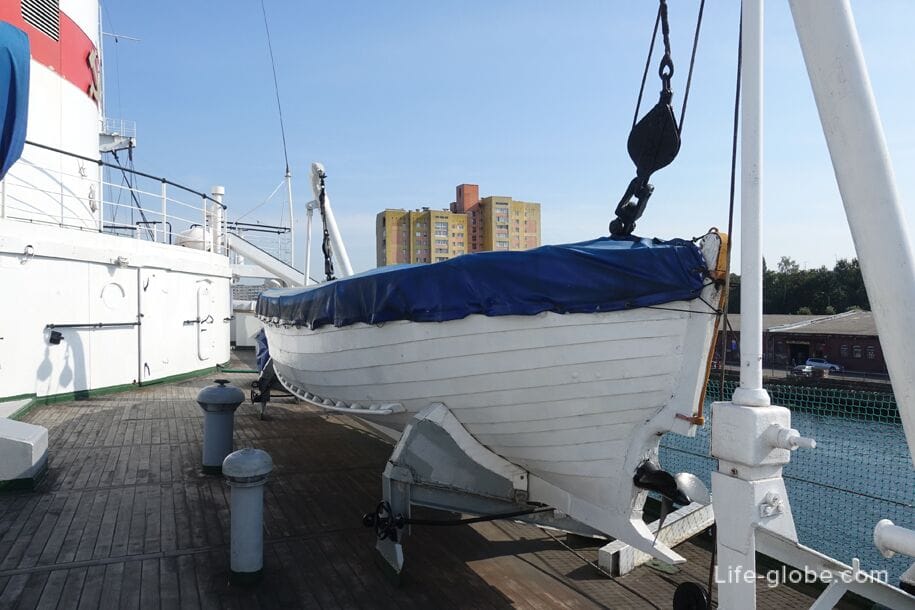
Anchor device
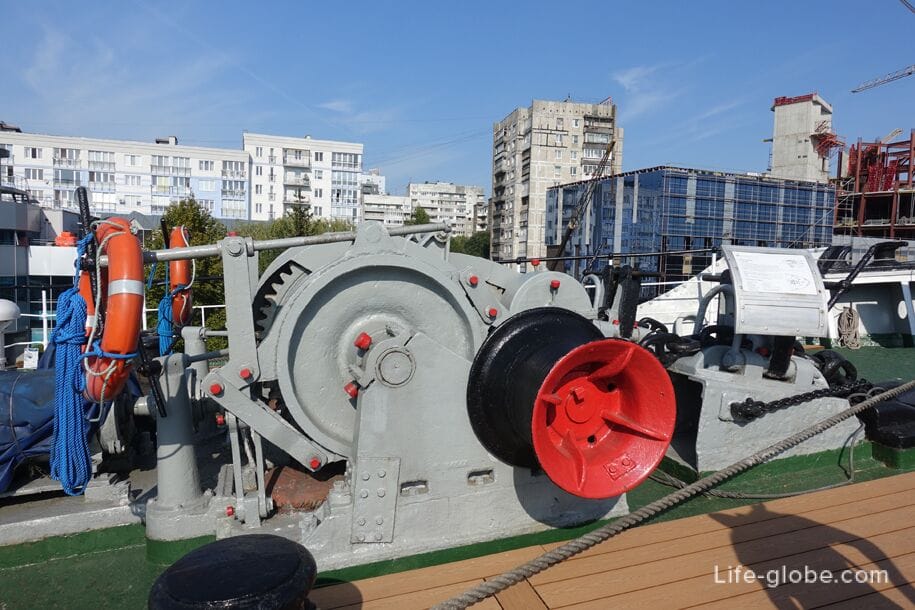
The vigilant and harsh protection of NIS "Vityaz"))
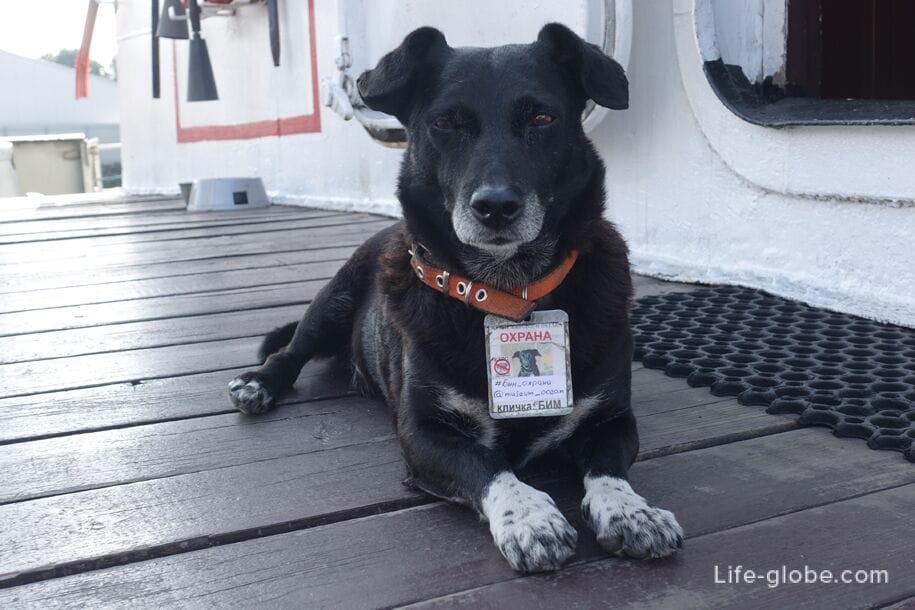
On board the vessel "Vityaz", in addition to expositions and exhibition samples, you can spend several days or nights, feeling like a full-fledged member of the marine team.
In the warmer months, guests can play table tennis. Fishing is also popular in the surrounding area.
It offers: single cabins, an improved double cabin and a cabin with two separate beds.
According to the reviews of visitors, the guest cabins "Vityaz" deserve a rating of "Excellent" - 9.2.
Cabins on the "Vityaz" diverge like hot cakes, some guests book such an interesting accommodation facility a year in advance before visiting. So hurry up and treat yourself and your loved ones with such an unusual accommodation facility. You can view and book a cabin room here...
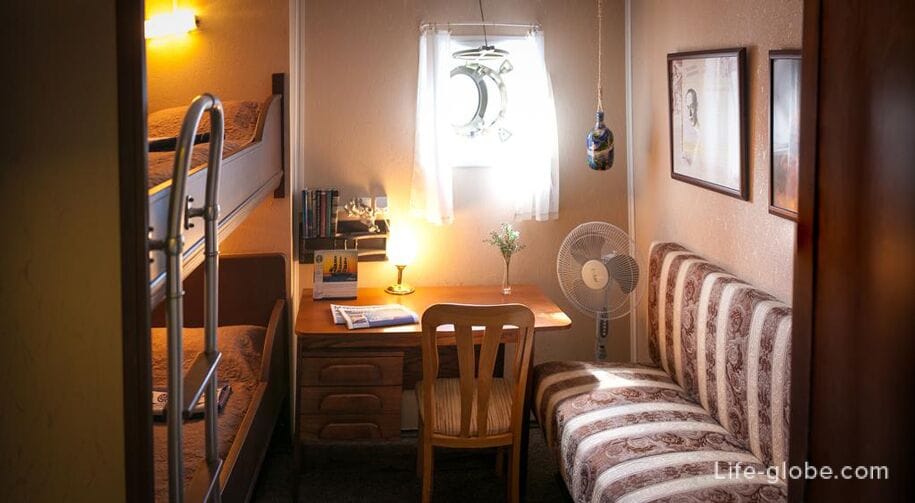
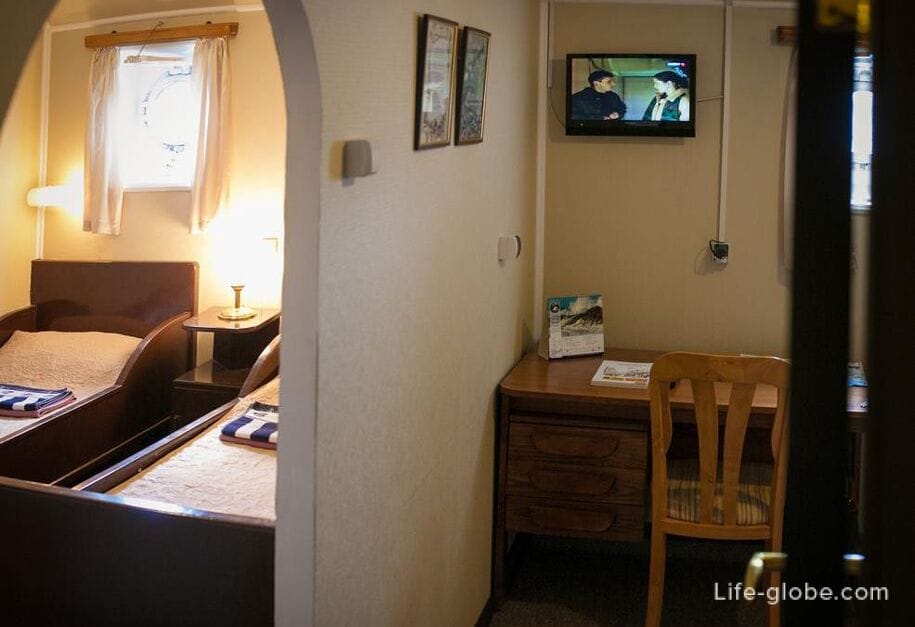
Location of NIS "Vityaz" in Kaliningrad: embankment of the Historical Fleet of the Museum of the World Ocean, address: Peter the Great Embankment, 1, Kaliningrad.
Visit to NIS Vityaz in Kaliningrad: you can find out the opening hours of the vessel Vityaz, excursions and ticket prices on the official website of the Museum of the World Ocean. Tickets can be purchased at the ticket offices of the Museum of the World Ocean.
Official website of the Museum of the World Ocean in Kaliningrad: world-ocean